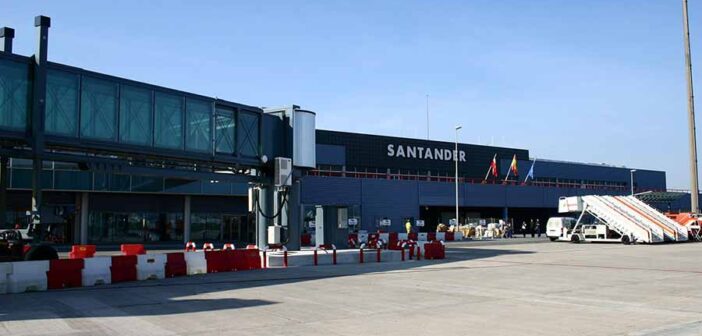Santander Airport, officially named Seve Ballesteros–Santander Airport, serves as the primary gateway to Spain’s Cantabria region, welcoming over a million passengers annually. Located just 5 kilometres from Santander’s city centre in the Camargo district, this modern airport connects travellers to 26 destinations across Spain and Europe, primarily through low-cost carriers like Ryanair, Vueling, and Iberia, alongside airlines such as Air Nostrum, Binter Canarias, and Wizz Air. Its compact size and coastal views make it a pleasant starting point for exploring Cantabria’s beaches and cultural sites.
Accessing the airport is straightforward, with multiple transport options ensuring a quick journey to and from the city. A public bus, operated by Transporte de Cantabria, runs every 30 minutes from 06:30 to 23:00, linking the airport to Santander’s main bus station in about 15 minutes for €3.20, with tickets available from the driver. ALSA coaches connect to regional cities like Bilbao and Oviedo, with tickets sold online or at the arrivals hall’s ticket machine.
Taxis, stationed outside the arrivals area, offer a 10- to 15-minute ride to the city centre for €25-30, while ride-hailing apps like Uber provide additional flexibility. Drivers benefit from the airport’s proximity to the S-10 and N-636 roads, with 500 free parking spaces in the P1 lot directly opposite the terminal. Pre-booking bus tickets or arranging taxis for early flights is recommended, as services can be limited outside peak hours.
The airport’s single terminal, remodelled in 2010, spans 10,200 square metres across two levels, with arrivals on the ground floor and departures upstairs. Featuring eight check-in desks, three baggage carousels, and seven boarding gates, the terminal is easy to navigate, with short walking distances and clear signage.
Security checks are typically quick, often under 10 minutes, though queues may form during peak summer months, so arriving two hours early for Schengen flights or 2.5 hours for non-Schengen is advised. The absence of air bridges means passengers board via bus or a short walk to the aircraft, which is manageable but worth noting in cooler weather.
Delays are generally minimal due to the airport’s smaller size and 2,420-metre runway, which supports efficient operations. However, summer peak periods from July to August can lead to congestion at check-in or security, and adverse weather, such as coastal fog or rain, may occasionally disrupt flights. On-time performance is reliable, particularly for Ryanair’s frequent routes to Madrid and London, but travellers should check flight status via airline apps or the airport’s website to stay informed. Air traffic control issues in European airspace can also cause minor disruptions, so planning ahead is prudent.
Dining options are modest but practical, with Trib’s eatery in the landside area serving sandwiches and larger meals like burgers, open before security for all travellers. Airside, a café offers coffee, pastries, and light snacks, operating according to flight schedules. Retail includes a Heinemann Duty-Free shop with perfumes, alcohol, and souvenirs, alongside a Come & Fly convenience store for travel essentials like neck pillows and phone chargers. While not extensive, these options meet basic needs for a short stay.
Facilities are well-suited to the airport’s scale, with free Wi-Fi available throughout and ATMs operated by Santander and Euronet in the check-in and arrivals areas. A children’s play area is located airside on the ground floor, and baggage trolleys are provided for convenience. Accessibility is prioritised, with ramps, lifts, and assistance services bookable 48 hours in advance through airlines. Public telephones and an information desk in the main hall assist with queries, but there are no lounges, showers, or water fountains post-security, and baby-changing facilities in restrooms are limited. The terminal closes from 23:00 to 05:00, preventing overnight stays, but nearby hotels like Hotel Nueva Plaza, a 5-minute drive away, offer convenient options.
Connections are straightforward for the airport’s primarily point-to-point flights, with routes to major hubs like Madrid facilitating transfers. Minimum connection times are around 45 minutes for domestic and 60 minutes for international flights, with clear signage guiding passengers to transfer desks. Non-Schengen connections may require passing through passport control, so allowing extra time is wise. The terminal’s compact size ensures quick transfers, but limited flight schedules mean careful planning is needed.




